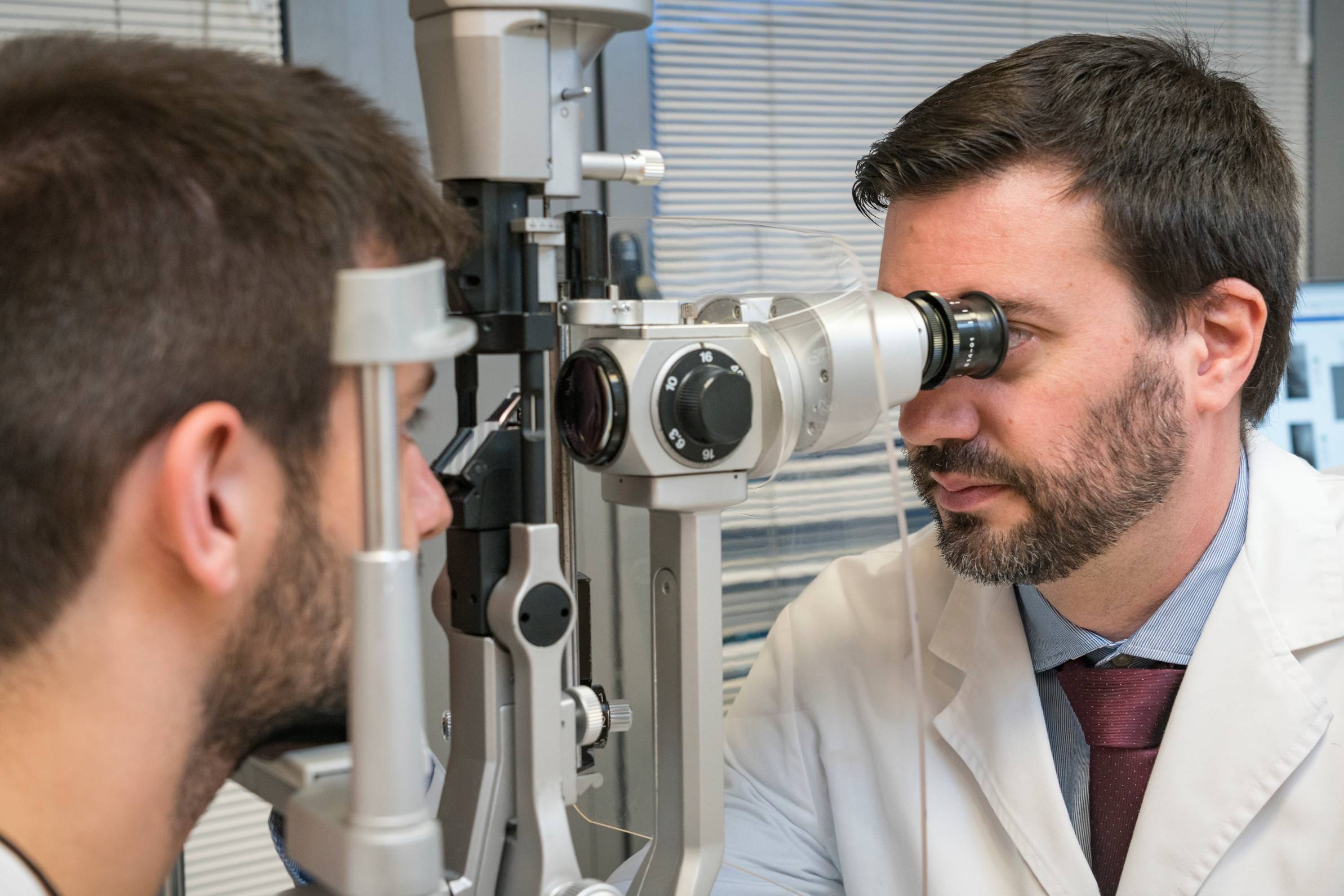
Corneal transplant or keratoplasty involves replacing the opaque corneal tissue when a corneal scar causes visual loss. Keratoplasty is currently highly developed and there are different techniques depending on which part of the tissue is affected. Anterior keratoplasty (where two anterior layers are replaced), endothelial keratoplasty (where only the inner layer is replaced) and penetrating keratoplasty (where the whole corneal thickness is replaced).
There are several causes of transparency loss, such as: Corneal ulcer, corneal trauma, distrophies, ectasia or corneal degenerative deposits.
Vision through a corneal opacity is like looking through an opaque glass, which causes blurred vision.
Corneal transplant can be simultaneously combined with cataract surgery, intraocular lens exchange or reconstruction of the eye after severe ocular trauma.
The surgery is performed under local anaesthesia and is an outpatient procedure. The eye is occluded for 24 hours. The opaque central part of the cornea is removed and a healthy and transparent part of cornea from a donor is sutured with 16 stitches. The donor’s cornea must be the same size as the extracted one.
During the postoperative recovery eye drops are prescribed, together with antibiotic and inti-inflammatory drugs. This surgical procedure, besides the inherent risks of infection and inflammation, has the risk of rejection, as it is involves using another person’s tissue. So, it requires a very strict follow up and a good patient’s cooperation in order to detect any problems that may arise as early as possible.
Visual recovery is quite fast. A great improvement may be appreciated from the beginning, but it is not until the sutures are removed that the final visual result can be assessed. In general the final refraction is prescribed one year after surgery. Optical correction can be done by the prescription of glasses, contact lenses or even laser refractive surgery.
We emphasize how important eye donations are to provide corneas for this type of surgery to all those patients that need to recover their vision. Any person can be a donor, regardless of age or presence of dioptres. Even a blind eye can be useful, if the cornea has a normal condition. A thousand keratoplasties procedures are currently performed in Catalonia every year. The need for donations is high.
Contact us or request an appointment with our medical team.